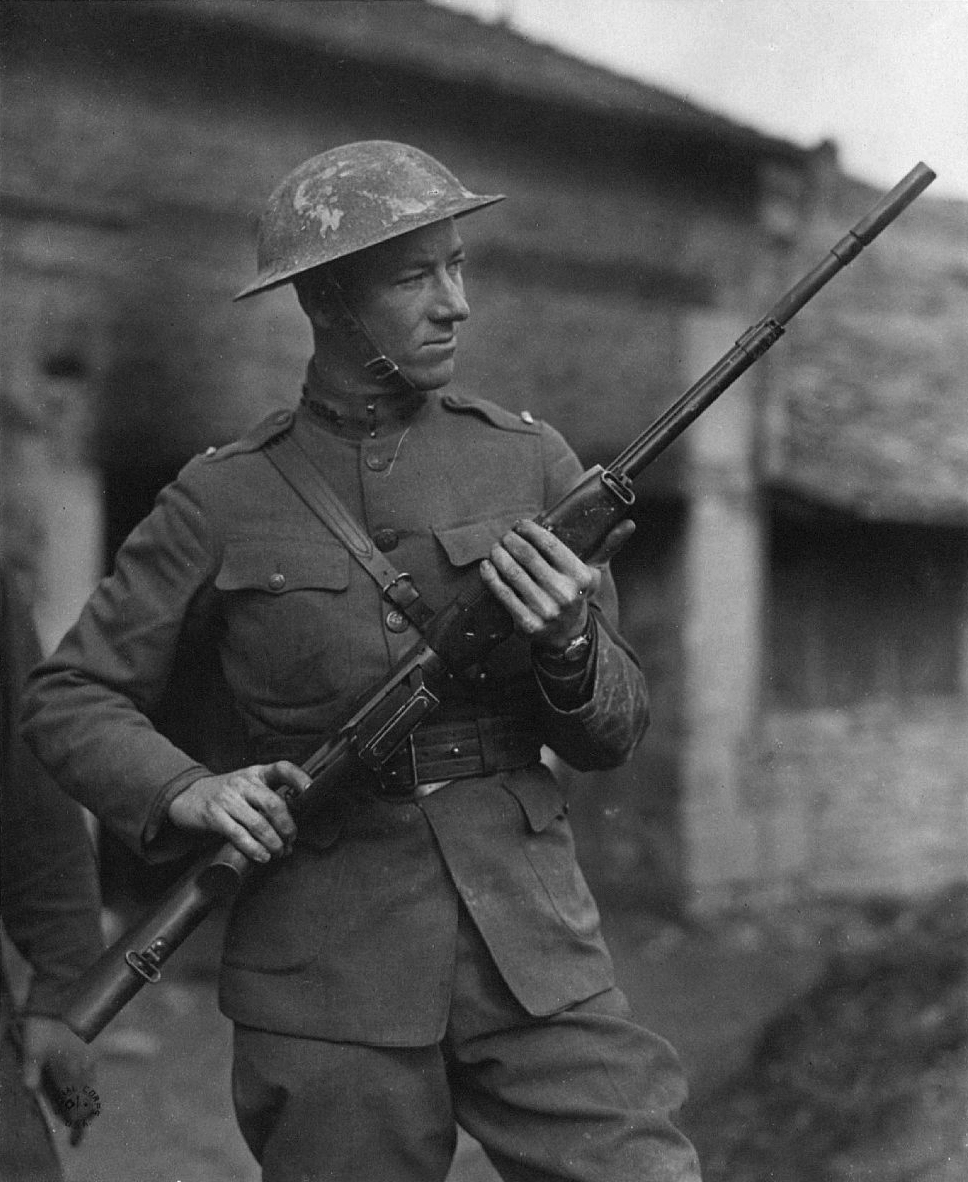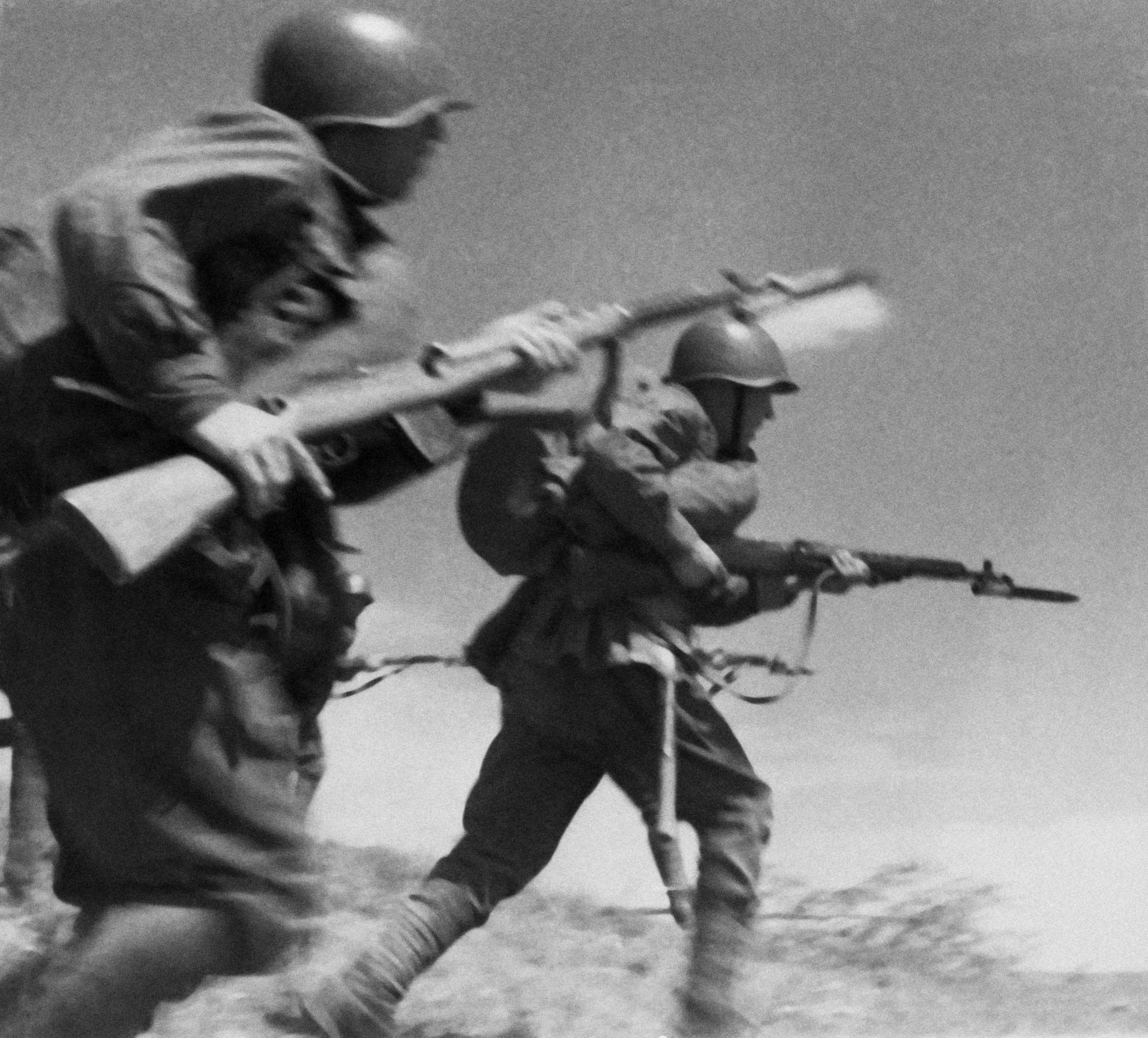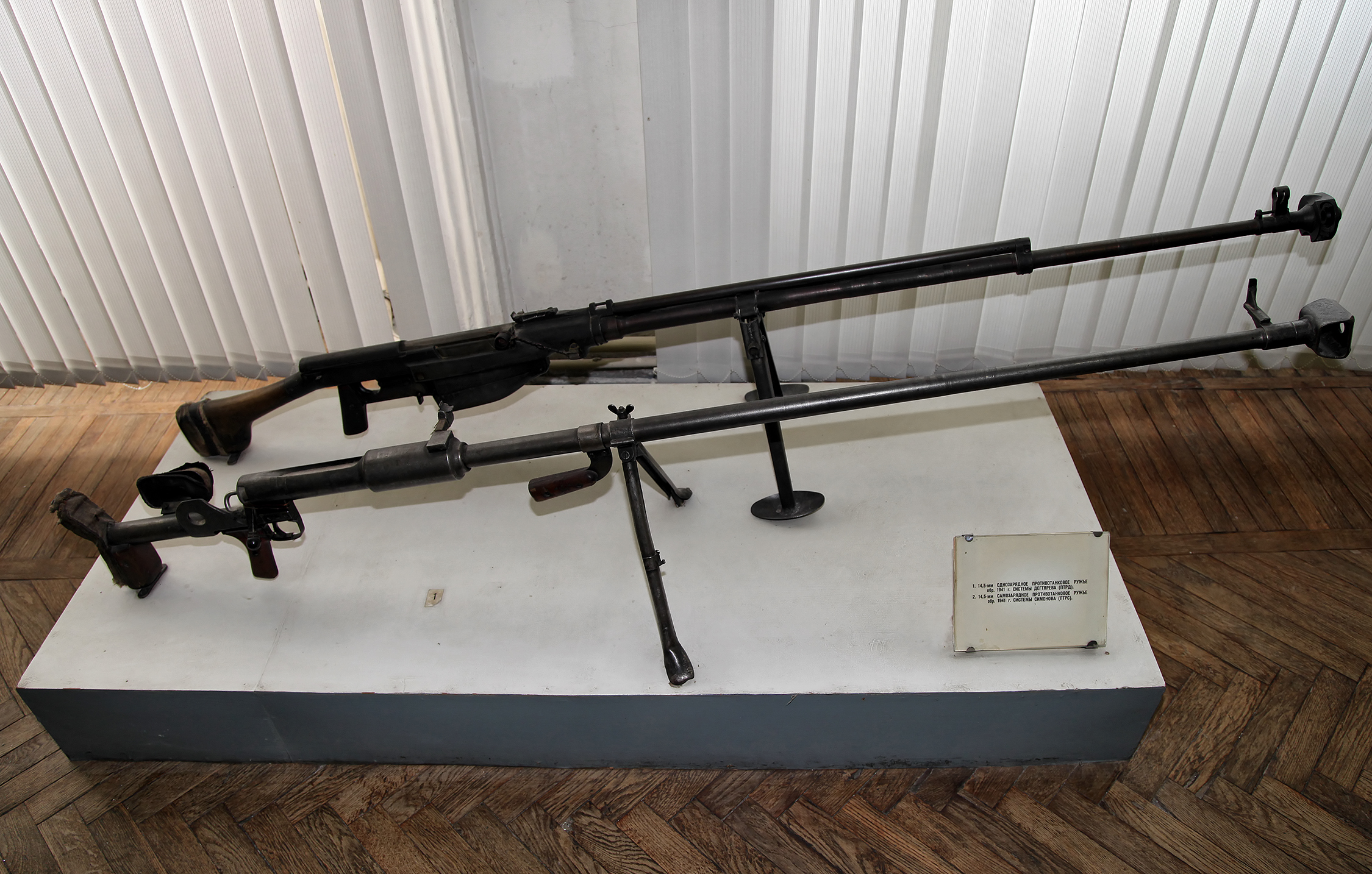|
AVS-36
The AVS-36 (from ''Avtomaticheskaya Vintovka Simonova 1936 model''; russian: Автоматическая винтовка Симонова образца 1936 года (АВС-36)) was a Soviet automatic rifle which saw service in the early years of World War II. It was among the early selective fire infantry rifles (capable of both single and full-automatic fire) formally adopted for military service. History Origins The designer, Sergei Simonov, began his work on a gas-operated self-loading rifle in 1930. The first prototype was ready in 1931 and appeared promising. Three years later a trial batch of an improved design was made. In 1935, a competition between Simonov's design and a rifle made by Fedor Tokarev was held. The Simonov rifle emerged as the winner and was accepted into service as the AVS-36. The AVS-36 was first seen in public in the 1938 May Day parade in Moscow, when it was displayed by the marching 1st Rifle Division. The American public became aware of it ... [...More Info...] [...Related Items...] OR: [Wikipedia] [Google] [Baidu] |
Automatic Rifle
An automatic rifle is a type of autoloading rifle that is capable of fully automatic fire. Automatic rifles are generally select-fire weapons capable of firing in semi-automatic and automatic firing modes (some automatic rifles are capable of burst-fire as well). Automatic rifles are distinguished from semi-automatic rifles in their ability to fire more than one shot in succession once the trigger is pulled. Most automatic rifles are further subcategorized as battle rifles or assault rifles. History Mannlicher In 1885 Ferdinand Mannlicher made an experimental self-loader based on work begun in 1883 in both semi-automatic and fully automatic modes. It was an impractical failure due to fouling by its black powder ammunition, but it influenced later designs. Furthermore, Mannlicher produced smokeless powder automatic rifles from the early 1890s onwards until his death in 1904. Cei-Rigotti One of the world's first automatic rifles was the Italian Cei-Rigotti. Introduced in ... [...More Info...] [...Related Items...] OR: [Wikipedia] [Google] [Baidu] |
Sergei Gavrilovich Simonov
Sergey Gavrilovich Simonov (Russian: Сергей Гаврилович Симонов; 9 April 1894 – 6 May 1986) was a soviet weapons designer; he is considered one of the fathers of the modern assault rifle. Mostly known for the Samozaryadnyi karabin sistemi Simonova (Russian: Самозарядный карабин системы Симонова), 1945 (Self-loading Carbine, Simonov's system, 1945), or SKS carbine, he also pioneered the assault and semi-automatic rifle field in the 1920s and 1930s, mostly under the supervision of both Vladimir Fyodorov and Fedor Tokarev. His early work preceded both the M1 Garand (of 1933), and the later M1 Carbine, AK-47, and M16 series. Born in 1894 in Fedotovo, Simonov began work in a foundry immediately after completing his elementary school studies. By the end of World War I, after completing a basic technician's course of instruction, he began working on a pioneering automatic rifle designed by Vladimir Grigoryevich Fyodorov, the F ... [...More Info...] [...Related Items...] OR: [Wikipedia] [Google] [Baidu] |
SVT-38
The SVT-40 (Samozaryadnaya Vintovka Tokareva, Obrazets 1940 goda, "Tokarev self-loading rifle, model of 1940", Russian: Самозарядная винтовка Токарева, образец 1940 года, often nicknamed "'' Sveta''") is a Soviet semi-automatic battle rifle. The SVT-40 saw widespread service during and after World War II. It was intended to be the Soviet Red Army's new service rifle, but its production was disrupted by the German invasion in 1941, resulting in a change back to the Mosin–Nagant rifle for the duration of World War II. After the war, the Soviet Union adopted new rifles, such as the SKS and the AK-47. History In the early 1930s, the Soviet Union requested the development of a semi-automatic rifle to replace the Mosin-Nagant, taking inspiration from the Mexican Mondragón rifle. The design was left up to two individuals, Sergei Simonov and Fedor Tokarev. Simonov, who had experience in developing the Fedorov Avtomat, created a prototype for ... [...More Info...] [...Related Items...] OR: [Wikipedia] [Google] [Baidu] |
Battle Rifle
A battle rifle is a service rifle chambered to fire a fully powered cartridge. The term "battle rifle" is a retronym created largely out of a need to better differentiate the intermediate cartridge, intermediate-powered assault rifles (e.g. the StG-44, AK-47, M16 rifle, M16, Steyr AUG, AUG) from full-powered rifles (e.g. the FG-42, AVS-36, FN FAL, and M14 rifle, M14, as well as the H&K G3 outside of sniping uses) as both classes of modern firearms have a similar appearance and share many of the same features such as magazine (firearms), detachable magazines, pistol grips, separate upper and lower receiver (firearms), receivers etc. Battle rifles were most prominent from the 1940s to the 1970s, when they were used as Service rifle, service rifles. While modern battle rifles largely resemble modern assault rifle designs, which replaced battle rifles in most roles, the term may also describe older military full-powered semi-automatic rifles such as the M1 Garand, SVT-40, Gewehr 41, Ge ... [...More Info...] [...Related Items...] OR: [Wikipedia] [Google] [Baidu] |
Magazine (firearms)
A magazine is an ammunition storage and feeding device for a repeating firearm, either integral within the gun (internal/fixed magazine) or externally attached (detachable magazine). The magazine functions by holding several cartridges within itself and sequentially pushing each one into a position where it may be readily loaded into the barrel chamber by the firearm's moving action. The detachable magazine is sometimes colloquially referred to as a " clip", although this is technically inaccurate since a clip is actually an accessory device used to help load ammunition into a magazine. Magazines come in many shapes and sizes, from tubular magazines on lever-action and pump-action firearms that may tandemly hold several rounds, to detachable box and drum magazines for automatic rifles and light machine guns that may hold more than one hundred rounds. Various jurisdictions ban what they define as "high-capacity magazines". Nomenclature With the increased use of semi-au ... [...More Info...] [...Related Items...] OR: [Wikipedia] [Google] [Baidu] |
Flapper Locking
Flapper locking is a type of locking mechanism used in self-loading firearms. It involves a pair of flappers on the sides of the bolt that each lock into an outwards recess in the receiver as the bolt is in battery. As the bolt is forced backwards after the firing of a cartridge, the flappers recede back into the bolt, therefore unlocking and sending the bolt backwards to cycle the gun. The design was patented in 1870 by Lieutenant Friberg of the Swedish Army, but the first actual example of a firearm that used this was made by another Swedish man named Kjellman in 1907. Most use of flapper locking came from the designs of the Soviet Union's Vasily Degtyaryov in the years surrounding World War II. Examples *Gewehr 41 (Walther) *Gewehr 43 *Degtyaryov machine gun *RPD machine gun *DShK *EM-2 rifle *AVS-36; used as secondary locking *MG 51 *Mauser 1906/08 pistol and 1905/06 rifle See also *Roller locked (similar) *Rotating bolt *Bolt action Bolt-action is a type of manual ... [...More Info...] [...Related Items...] OR: [Wikipedia] [Google] [Baidu] |
AVS 36
AVS or Avs may refer to: People * AVS (actor), Indian actor and comedian Sports * Colorado Avalanche, an NHL hockey team Schools * Abbey Vocational School, a secondary school in County Donegal, Ireland * Amman Valley School, a bilingual (Welsh and English) secondary school in Wales Science * American Vacuum Society, a member society of the American Institute of Physics, now known only as AVS * Angle of Vanishing Stability, the angle at which a boat will capsize * Acid volatile sulfide Audio video * Audio Video Standard, a Chinese multimedia standard * Auditory Visual Stimulation, a controversial princip of the called Mind machine A mind machine (aka ''brain machine'' or ''light and sound machine'') uses pulsing rhythmic sound, flashing light, or a combination of these to alter the frequency of the user's brainwaves. Mind machines can induce deep states of relaxation, conc ..., or psychowalkman Hardware * Adaptive voltage scaling, Adaptive Voltage Scaling as power optim ... [...More Info...] [...Related Items...] OR: [Wikipedia] [Google] [Baidu] |
Red Army World War II Rifles
Red is the color at the long wavelength end of the visible spectrum of light, next to orange and opposite violet. It has a dominant wavelength of approximately 625–740 nanometres. It is a primary color in the RGB color model and a secondary color (made from magenta and yellow) in the CMYK color model, and is the complementary color of cyan. Reds range from the brilliant yellow-tinged scarlet and vermillion to bluish-red crimson, and vary in shade from the pale red pink to the dark red burgundy. Red pigment made from ochre was one of the first colors used in prehistoric art. The Ancient Egyptians and Mayans colored their faces red in ceremonies; Roman generals had their bodies colored red to celebrate victories. It was also an important color in China, where it was used to color early pottery and later the gates and walls of palaces. In the Renaissance, the brilliant red costumes for the nobility and wealthy were dyed with kermes and cochineal. The 19th century brought the ... [...More Info...] [...Related Items...] OR: [Wikipedia] [Google] [Baidu] |
Battle Of Khalkhin Gol
The Battles of Khalkhin Gol (russian: Бои на Халхин-Голе; mn, Халхын голын байлдаан) were the decisive engagements of the undeclared Soviet–Japanese border conflicts involving the Soviet Union, Mongolia, Japan and Manchukuo in 1939. The conflict was named after the river Khalkhin Gol, which passes through the battlefield. In Japan, the decisive battle of the conflict is known as the after Nomonhan, a nearby village on the border between Mongolia and Manchuria. The battles resulted in the defeat of the Japanese Sixth Army. Background After the Japanese occupation of Manchuria in 1931, Japan turned its military interests to Soviet territories that bordered those areas. The first major Soviet-Japanese border incident, the Battle of Lake Khasan, occurred in 1938 in Primorye. Clashes between Japanese and Soviet forces occurred frequently along the border of Manchuria. In 1939, Manchuria was a puppet state of Japan known as Manchukuo, and Mo ... [...More Info...] [...Related Items...] OR: [Wikipedia] [Google] [Baidu] |
LS-26
The ''Lahti-Saloranta M/26'' (alternatively ''LS/26'') is a light machine gun which was designed by Aimo Lahti and Arvo Saloranta in 1926. The weapon was able to fire in both full automatic and semi-automatic modes. Both 20-round box and 75-round drum magazines were produced, but the Finnish Army seems to have only used the smaller 20-round magazine. In the Winter War, there were two squads in each platoon that provided covering fire for two ten-man rifle squads. In each squad, there was one M/26 gunner, one assistant and the rest of the men carrying rifles. Soldiers found it would jam when magazine was loaded to capacity. Often they would take a round out of the magazine and hope an officer did not inspect it. History The M/26 won a Finnish Army competition in 1925 where it was selected as the army's main light machine gun. Production started in 1927 at the Valtion kivääritehdas (VKT), State Rifle Factory, and lasted until 1942. More than 5,000 weapons were produced during th ... [...More Info...] [...Related Items...] OR: [Wikipedia] [Google] [Baidu] |
PTRS-41
The PTRS-41 or Simonov anti-tank rifle (russian: ПротивоТанковое Ружьё Симонова) is a World War II-era semi-automatic anti-tank rifle firing the 14.5×114mm cartridge. Design The PTRS-41 was produced and used by the Soviet Union during World War II. In the years between the World Wars, the Soviet Union began experimenting with different types of armour-piercing anti-tank cartridges. Finding the 12.7×108mm insufficient, they began development of what became the 14.5×114mm armour-piercing round. Rukavishnikov developed to use this cartridge, but it was not successful because of some manufacturing issues, a sufficient number of more effective anti-tank guns in the Red Army, and high expectations about new German tank armour. In 1941, the loss of huge amounts of anti-tank artillery created a need for a stop-gap anti-tank weapon, so famous USSR weapons designers such as Vasily Degtyaryov and Sergei Gavrilovich Simonov were tasked to design anti-tank r ... [...More Info...] [...Related Items...] OR: [Wikipedia] [Google] [Baidu] |
Muzzle Brake
A muzzle brake or recoil compensator is a device connected to, or a feature integral to the construction of, the muzzle or barrel of a firearm or cannon that is intended to redirect a portion of propellant gases to counter recoil and unwanted muzzle rise. Barrels with an integral muzzle brake are often said to be ported. The concept of a muzzle brake was first introduced for artillery. It was a common feature on many anti-tank guns, especially those mounted on tanks, in order to reduce the area needed to take up the strokes of recoil and kickback. They have been used in various forms for rifles and pistols to help control recoil and the rising of the barrel that normally occurs after firing. They are used on pistols for practical pistol competitions, and are usually called compensators in this context.STI article on Limcat Under ... [...More Info...] [...Related Items...] OR: [Wikipedia] [Google] [Baidu] |






